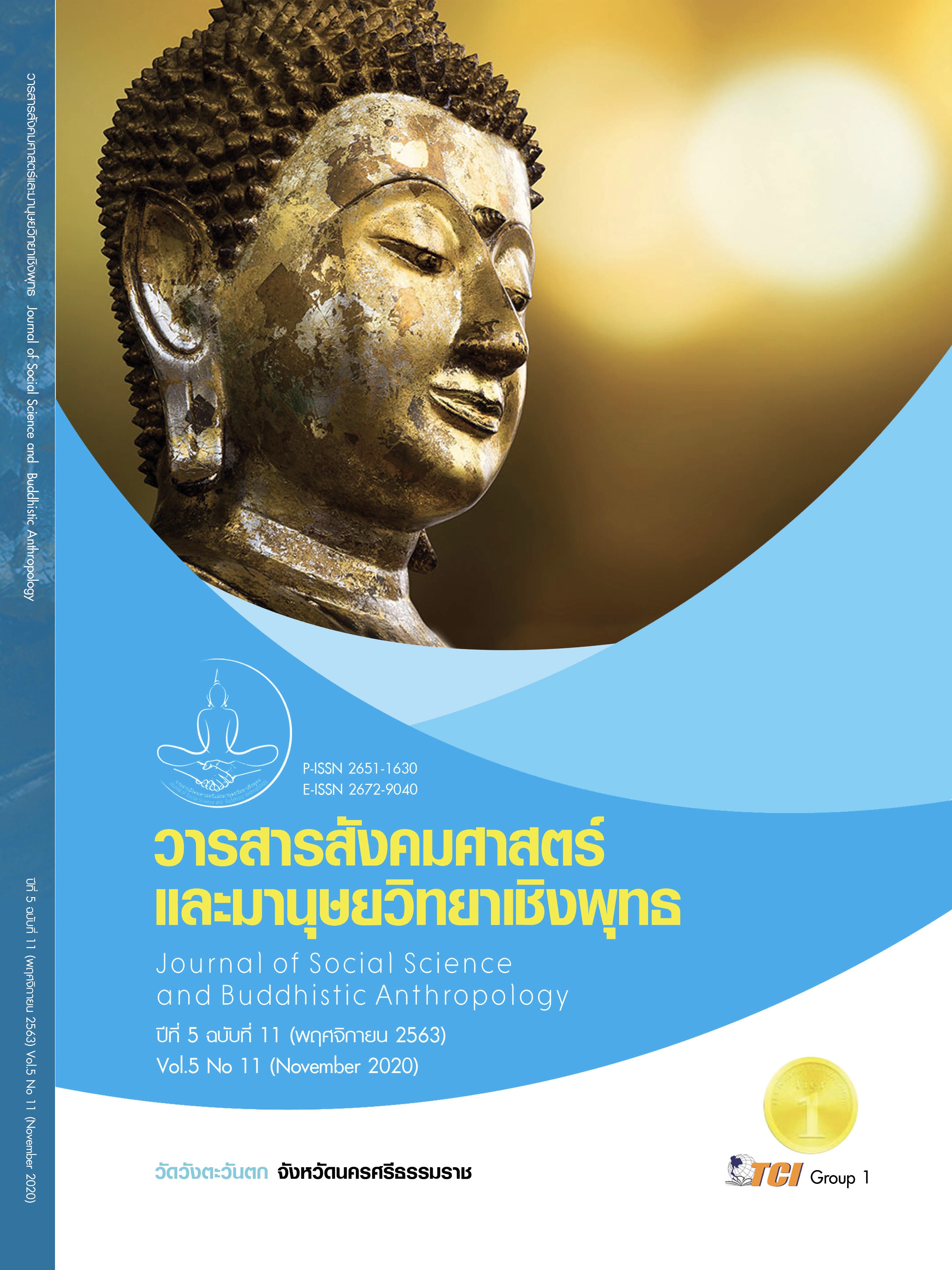DEVELOPMENT OF A HEALTH PROMOTION PROGRAM FOR ELECTRICAL WORKERS IN PROVINCIAL ELECTRICITY AUTHORITY CHIANG MAI
Keywords:
Development, Health Promotion Program, Electrical Workers, Provincial Electricity AuthorityAbstract
The Objectives of this research article were to develop a health promotion program for electrical workers in Provincial Electricity Authority in Chiang Mai. Participants were 49 electrical workers in Sankampaeng Provincial Electrical Authority (n=26) and Doi Saket Provincial Electrical Authority (n=23). There were three phases in this research procedure. Phase 1 was to prepare for development a health promotion, including a situational analysis process and a systematic review process. Phase 2 was to develop a health promotion program, including organizing a focus group discussion with participants to analyze the causes and effects of health problems among electrical workers and creating the health promotion program based on the concept of social ecology. Phase 3 was to implement the program. This was a process of negotiation between employers and a group of employees aimed at reaching an agreement on health behavior change.This health promotion program included 1) promoting a healthy and safe environment within the workplaces; 2) creating a well-being area in the workplace; 3 ) putting calorie counts on posters in the cafeteria in the workplace; 4) setting a goal to eat a low calorie and a low fat diet; 5) setting a performance target in the workplace of at least 3,000 steps per day; 6) organizing sports activities every Wednesday to promote physical fitness; 7) awarding those who succeed in their healthy behavior change; 8) following up with participants to evaluate the program and to give suggestions on any problems they face during the process. It is expected that this program will result in better physical and mental health among the participants. The results can be generalized to electrical workers in other local provincial electrical authority offices, and other offices can apply this program to promote the health and wellbeing of their employees.
References
กรมพลศึกษา. (2562). แบบทดสอบและเกณฑ์มาตรฐานสมรรถภาพทางกายของประชาชนไทย อายุ 19-59 ปี. กรุงเทพมหานคร: สำนักงานวิทยาศาสตร์การกีฬา กรมพลศึกษา กระทรวงการท่องเที่ยวและกีฬา.
เครือข่ายคนไทยไร้พุง ราชวิทยาลัยอายุรแพทย์แห่งประเทศไทย. (2560). มาร่วมกันพัฒนาองค์กรไปสู่การเป็น “Healthy Organization.”. เรียกใช้เมื่อ 29 มกราคม 2562 จาก http://healthy-org.com/content/about_project/89
บุษป์รัตน์ การะโชติ. (2559). โรคคอมพิวเตอร์วิชั่นซินโดรม. จดหมายข่าวองค์การเภสัชกรรม, 23(1), 17-18.
พรรณี ปานเทวัญ. (2560). โมเดลเชิงนิเวศวิทยากับการเปลี่ยนแปลงพฤติกรรมสุขภาพ. วารสารพยาบาลทหารบก, 18(2), 7-15.
มุสตอพา ซิ. (2561). การพัฒนาโปรแกรมสร้างเสริมสุขภาพโดยใช้แนวคิดนิเวศวิทยาเชิงสังคมและระยะการปรับเปลี่ยนพฤติกรรมเพื่อควบคุมระดับไขมันในเลือดของพนักงานในสถานประกอบการ. วารสารพยาบาลสงขลานครินทร์, 38(4), 1-13.
ศิรินันท์ กิตติสุข และคณะ. (2555). คุณภาพชีวิต การทำงาน และความสุข. กรุงเทพมหานคร: โรงพิมพ์ธรรมดาเพรส.
สง่า ดามาพงษ์. (2562). การขับเคลื่อน Healthy Organization สู่ความยั่งยืน. กรุงเทพมหานคร: สมาคมโภชนาการแห่งประเทศไทย ในพระราชูปถัมภ์สมเด็จพระเทพรัตนราชสุดาฯ สยามบรมราชกุมารี และภาคีเครือข่ายด้านอาหารและโภชนาการ.
สำนักงานกองทุนสนับสนุนการสร้างเสริมสุขภาพ. (2560). การส่งเสริมสุขภาพจิต: แนวคิด หลักฐาน และแนวทางปฏิบัติ. กรุงเทพมหานคร: แผนงานพัฒนานวัตกรรมเชิงระบบเพื่อการสร้างเสริมสุขภาพจิต.
สำนักโรคไม่ติดต่อ กรมควบคุมโรค กระทรวงสาธารณสุข. (2560). NCD FORUM 2017 Moving Forward. กรุงเทพมหานคร: สำนักพิมพ์อักษรกราฟฟิคแอนด์ดีไซน์.
หนึ่งหทัย ขอผลกลาง และ กิตติ กันภัย. (2553). งานวิจัยด้านการสื่อสารสุขภาพ: กลไกในการพัฒนาสังคม. วารสารเทคโนโลยีสุรนารี, 4(1), 65-77.
อภิชัย มงคล และคณะ. (2552). การพัฒนาและทดสอบดัชนีชี้วัดสุขภาพจิตคนไทย (Version 2007). กรุงเทพมหานคร: โรงพิมพ์ชุมนุมสหกรณ์การเกษตรแห่งประเทศไทย.
McLeroy, K. R. et al. (1988). An ecological perspective on health promotion programs. Health Education Quarterly, 15(1), 351-377.
Pender, J. N. et al. (2011). Health Promotion in Nursing Practice. Boston: Pearson.
Tan, G. et al. (2004). Validation of the Brief Pain Inventory for chronic nonmalignant pain. The Journal of Pain: Official Journal of the American Pain Society, 5(2), 133-137.
World Health Organization. (2014). Global status report on non-communicable diseases. Geneva: World Health Organization.








